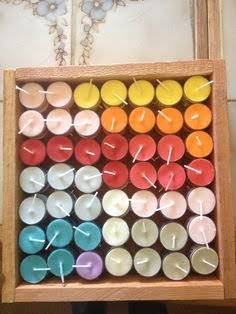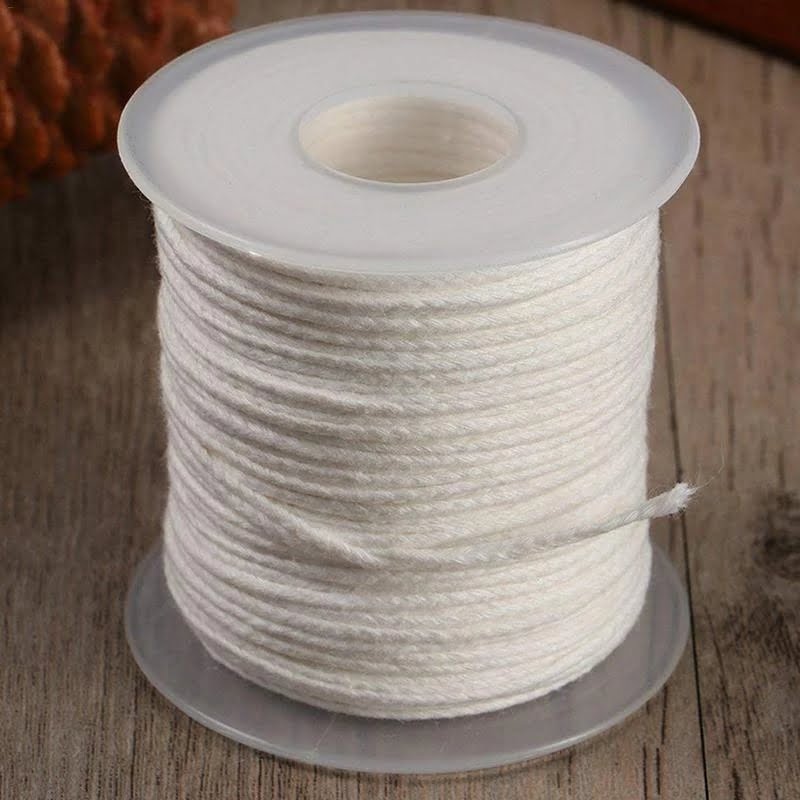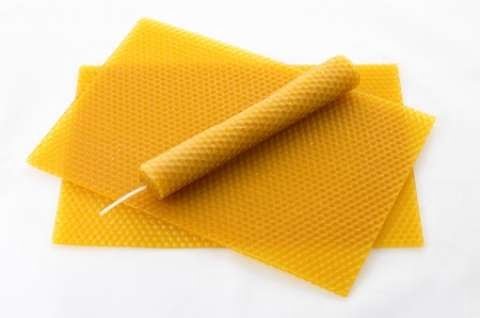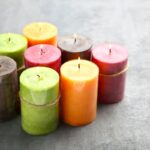Making candles can be a fascinating and fulfilling hobby, allowing you to explore your creativity and create beautiful and personalized decorative pieces. Whether you are a beginner or have some experience in crafting, candle making offers endless opportunities for innovation and self-expression.
From choosing the perfect wax type to selecting fragrances and colors, every step in the process allows you to add your personal touch and create candles that reflect your unique style. In this article, we will guide you through the world of candle making, providing valuable tips and techniques to help you get started on this rewarding journey.
Candle making is not only an enjoyable pastime but also an art form that has been practiced for centuries. It offers a therapeutic experience as you immerse yourself in the process of creating something beautiful from scratch. By understanding different types of wax, their properties, and how they interact with fragrances and colors, you can create candles that burn efficiently while emanating enchanting aromas.
To start making candles, it is crucial to gather the essential tools and equipment required for successful projects. Molds, thermometers, melting pots, wicks – each tool serves its purpose in achieving professional-looking results. Additionally, understanding safety precautions when handling hot wax is vital to ensure a safe working environment.
In the following sections of this article, we will delve deeper into the various aspects of candle making – from selecting fragrances and colors to step-by-step instructions on creating your own candles. We will also explore advanced techniques and variations that allow you to experiment with decorative elements such as embeds, layering colors and scents, shaping hand-molded designs, or creating cozy container candles using jars or teacups.
Furthermore, we will discuss important aspects related to candle safety and care for both enjoyment purposes as well as turning your candle-making hobby into a business venture.
Embark on this rewarding journey of candle making with us – discover the techniques, unleash your creativity, ensure safety, and enjoy the process of bringing light and fragrance into your life.
The Basics of Candle Making
Exploring the Different Types of Candle Wax: Paraffin, Soy, Beeswax, and More
When starting your candle making journey, it is essential to understand the different types of wax available and their properties. The most common types of candle wax are paraffin, soy, and beeswax.
Paraffin wax is widely used in candle making due to its affordability and ease of use. It is derived from petroleum and has a high melting point, which results in longer burning times for candles made with paraffin wax. However, it is worth noting that paraffin wax produces some soot when burned.
Soy wax is a natural alternative to paraffin wax and has gained popularity among eco-conscious candle makers. Made from soybean oil, this type of wax is biodegradable and renewable. Soy wax also burns cleaner than paraffin wax, producing less soot and ensuring a healthier indoor air quality.
Another option for candle makers is beeswax. Beeswax is known for its natural golden color and sweet honey-like scent. Similar to soy wax, beeswax is a natural choice that burns cleaner than paraffin wax. It also has a longer burn time due to its higher melting point.
Choosing the Right Wax for Your Candle Making Project: Factors to Consider
When selecting a particular type of wax for your candle making project, there are several factors to consider:
- Purpose: Determine the purpose of your candles – whether they are intended for decorative or functional use. If you want long-burning candles primarily for ambiance or aromatherapy purposes, soy or beeswax may be a better choice. However, if you need affordable candles in bulk for events or special occasions, paraffin might be more suitable.
- Eco-friendliness: If sustainability is important to you, opt for soy wax or beeswax, as they are renewable resources. These types of wax have minimal impact on the environment compared to paraffin wax, which is derived from fossil fuels.
- Scent throw: Consider the scent throw you desire for your candles. Paraffin wax tends to hold fragrance oils better and emit a stronger scent when burned. On the other hand, soy wax and beeswax offer a more subtle aroma.
Understanding the Key Differences Between Each Wax Type: Pros and Cons
Each type of candle wax has its own set of advantages and disadvantages:
– Paraffin wax:
- Pros: Affordable, long burn time, strong scent throw.
- Cons: Derived from petroleum, produces soot when burned.
– Soy wax:
- Pros: Renewable resource, biodegradable, cleaner burning.
- Cons: Can be more expensive than paraffin, may have a weaker scent throw.
– Beeswax:
- Pros: Natural and sustainable, longer burn time, pleasant honey-like scent.
- Cons: More expensive than paraffin and soy wax.
By understanding these differences and considering your specific needs and preferences, you can confidently choose the right type of wax for your candle making projects. Remember that experimentation and personal preference play a significant role in finding your favorite wax type.
Essential Tools and Equipment for Candle Making
Candle making requires the use of specific tools and equipment to ensure a successful and enjoyable experience. Having the right tools not only makes the process easier but also helps achieve professional-looking results. Here are some must-have tools for candle making:
- Molds: Candle molds come in various shapes and sizes, allowing you to create different types of candles, including pillars, tapers, and votives. Silicone molds are becoming increasingly popular due to their flexibility and ease of use.
- Thermometers: A thermometer is essential for monitoring wax temperature accurately. It helps ensure that the wax reaches its melting point without overheating or cooling too quickly.
- Melting Pots: These containers are specifically designed for melting wax safely and evenly. Double boilers or pouring pots made of heat-resistant materials such as stainless steel or aluminum are commonly used.
- Wick Holders: Wick holders keep the wick centered in the candle while it is cooling and setting. They come in different styles, such as metal clips or adhesive stickers, depending on your preference.
- Measuring Tools: Accurate measurements are crucial in candle making. Graduated pitchers or scales help measure the correct amount of wax, fragrance oils, and dyes needed for each batch.
When working with hot wax, safety precautions should be taken to protect yourself from potential accidents. Always wear protective gear such as gloves, safety goggles, and an apron to prevent burns and spills. It is also important to have a fire extinguisher nearby in case of any emergencies.
Understanding the purpose and functions of each tool is vital in achieving successful candle making. Molds allow you to shape your candles into various designs while thermometers help maintain optimal temperature control. Melting pots are essential for safely melting wax, while wick holders ensure proper wick placement.
Accurate measurements with the help of graduated pitchers or scales guarantee consistent results in every batch. By having these essential tools and following safety precautions, you can embark on your candle making journey with confidence and ease.
Selecting Fragrances and Colors for your Candles
Selecting the right fragrances and colors for your candles is an important part of the candle making process. Fragrances can create a soothing ambiance and add a pleasant scent to any space, while colors can enhance the aesthetic appeal of your candles. In this section, we will explore the different types of fragrances, dye options, and techniques to create harmonious scent and color combinations.
When it comes to adding fragrance to your candles, there are various options to choose from. Essential oils are popular choices as they provide natural scents derived from plants and flowers. They come in a wide range of fragrance notes such as lavender, citrus, vanilla, and more.
Another option is fragrance oils, which are synthetic but offer an extensive variety of scents including unique blends like apple cinnamon or ocean breeze. It’s important to note that not all fragrances are suitable for candle making, so it’s essential to use ones specifically formulated for this purpose.
Colors play a crucial role in creating visually appealing candles that match your desired aesthetic. You can use liquid or dye chips to add color to your candle wax. Liquid dyes offer a wide range of colors and allow you to blend different shades easily.
On the other hand, dye chips offer convenience as they come in pre-measured quantities. It’s important to always follow the recommended usage amounts for dyes, as using too much can affect the burning quality of your candles.
Creating harmonious scent and color combinations is an artistic aspect of candle making that allows you to unleash your creativity. Consider how the scent and color complement each other and evoke specific moods or sensations.
For example, pairing lavender fragrance with a soft purple color can create a calming effect, while a blend of citrus scents with vibrant yellow can add an energizing touch. Experiment with different combinations to find the perfect balance that resonates with your personal style and the intended purpose of your candles.
Step-by-Step Guide
Preparing Your Workspace
Before you begin making candles, it’s important to set up a properly ventilated workspace. This will help ensure safety and prevent any overwhelming fumes from the melting wax and fragrance oils. Choose a well-ventilated area or consider using a portable ventilation fan or open windows to create airflow. Cover your workspace with newspaper or plastic sheets to protect it from any spills or drips.
Melting the Wax
One of the key steps in candle making is melting the wax. There are several techniques you can use to achieve the ideal consistency for your candles. One method is using a double boiler system, where you place the wax in a pouring pitcher and then place that pitcher in a larger pot filled with water. Heat the water over medium heat until the wax melts, stirring occasionally with a heat-resistant utensil.
Another popular method is using a microwave to melt the wax. Place chunks of wax in a microwave-safe container and heat it in short intervals, stirring in between each interval, until fully melted. Be cautious not to overheat or burn the wax during this process.
Adding Fragrances and Colors
Once your wax is melted, it’s time to add fragrances and colors to your candles. Measure out your fragrance oil according to the recommended usage rate provided by the manufacturer. Stir gently but thoroughly into the melted wax, ensuring that it is evenly incorporated.
When adding color, use liquid dyes specifically formulated for candle making. Start by adding small amounts of dye to achieve your desired shade and mix well before adding more if needed.
Remember that both fragrance oils and dyes can affect how your candle burns, so it’s important to follow recommended guidelines when adding them.
Choosing the Right Wicks
Selecting the right wick for your candles is crucial for proper burning and safety. The length and diameter of the wick will depend on the size and type of candle you are making. Consider factors such as wax type, container size, and desired burn time when choosing your wick.
A general rule of thumb is to choose a wick that is slightly wider than the diameter of your container. If the wick is too small, it may result in a weak flame or tunneling, where wax remains along the sides of the container without melting all the way to the edges.
Additionally, ensure that your wicks are made of cotton or another flammable material specifically designed for candle making.
Pouring the Wax
Now that your fragrance and color are added and your wick is secured in place, it’s time to pour the melted wax into your chosen containers. Pour slowly and steadily to minimize air bubbles. You can use a pouring pitcher or a heat-resistant measuring cup with a spout for precise and controlled pouring.
To achieve smooth and professional-looking candles, try to pour at a consistent temperature. It’s recommended to pour your wax at around 180-185°F (82-85°C). Avoid pouring at higher temperatures as it may cause shrinkage or cracking later on.
Once you’ve poured all of your wax into the containers, set them aside in a cool, undisturbed area to allow them to set fully before moving on to the next steps.
Allowing the Candles to Set
After pouring, it’s important to let your candles cool and cure properly before lighting them. This process, known as setting or curing, allows the wax to fully solidify and ensures optimal burning performance.
Place your containers in an area where they won’t be exposed to any drafts or temperature fluctuations. The ideal curing time can vary depending on factors such as candle size and ambient temperature but usually ranges between 24-48 hours.
Remember not to move or disturb the candles during this time to avoid uneven cooling or potential damage.
Troubleshooting Common Candle Making Problems
While making candles, you may encounter some common problems that can affect the final results. Some of these issues include sinkholes, air bubbles, or uneven burning. Fortunately, there are several troubleshooting techniques you can employ.
If your candle develops sinkholes or uneven surfaces after pouring, gently warm the top with a heat gun or hairdryer to smooth out the surface. To eliminate air bubbles within your candles, use a heat-resistant tool like a skewer or toothpick to carefully prod and break them up before the wax fully sets.
For issues with uneven burning, adjust the wick by trimming it to an appropriate length, ensuring that it is centered and straight within the container. Experimenting with different wick sizes and types may also help resolve this problem.
By addressing these common candle making problems, you can enhance the quality and appearance of your homemade candles.
Exploring Advanced Techniques and Candle Making Variations
In addition to creating basic candles, exploring advanced techniques and variations in candle making can unlock endless possibilities for creativity and customization. By incorporating decorative elements, experimenting with layered designs, shaping candles by hand-molding, or utilizing containers for a cozy touch, you can take your candle making skills to the next level.
One popular advanced technique is adding decorative elements to candles. Embeds, such as dried flowers, herbs, or small objects, can be placed in the melted wax before pouring it into the mold. This creates a visually appealing effect when the candle is lit and the embeds become visible through the transparent wax.
Another option is using glitter to add sparkle and shine to your candles. Simply sprinkle a small amount of glitter on top of the poured wax before it sets. You can also create beautiful swirl patterns by gently swirling different colored waxes together using a toothpick or skewer.
Layered candles are another creative variation that adds depth and dimension to your creations. To make a layered candle, pour one layer of colored wax into the mold, allow it to cool and set partially, then pour another layer on top. Repeat this process with different colors until you achieve the desired effect. Each layer should have enough time to cool before adding the next layer to prevent blending of colors.
Shaping candles by hand-molding allows you to create unique designs that cannot be achieved with traditional molds. Soften the wax by heating it slightly and mold it into various shapes using your hands or specialized tools like cookie cutters or silicone molds. This technique offers endless opportunities for creating personalized candles for special occasions or gifting purposes.
Using containers such as jars, mugs, or teacups is another popular variation that adds a cozy touch to your candles. Not only do container candles provide a functional aspect by containing melted wax, but they also enhance the aesthetic appeal of your finished product. Select containers that complement the style and theme you want to achieve, whether it’s rustic, modern, or vintage. Container candles are also convenient as they can be easily transported and make great gifts.
By exploring these advanced techniques and candle making variations, you can elevate your candle making skills and create unique candles that reflect your personal style. Whether you choose to add decorative elements, experiment with layered designs, shape candles by hand-molding, or utilize containers for a cozy touch, the possibilities are endless. Let your creativity soar, and enjoy the satisfaction of creating beautiful and customized candles for yourself or others to enjoy.
| Advanced Technique | Description |
|---|---|
| Adding Decorative Elements | Incorporate embeds, glitter, or swirl patterns for visually appealing effects in candles. |
| Layered Candles | Create depth and dimension by pouring multiple layers of colored wax into the mold. |
| Shaping Candles | Mold melted wax into various shapes using hands or specialized tools like cookie cutters. |
| Container Candles | Utilize jars, mugs, or teacups as containers for convenience and added aesthetic appeal. |
Candle Safety and Care for Enjoyment
When it comes to candle making, safety should always be a top priority. Candles may bring warmth and ambience to your home, but if not used and cared for properly, they can pose a fire hazard. By following some basic safety precautions, you can ensure that your candle-making experience is enjoyable and worry-free.
First and foremost, it is crucial to understand fire safety when using candles. Always keep candles away from flammable materials such as curtains, furniture, or loose papers. Make sure they are placed on a stable surface that is resistant to heat or flames. Never leave a burning candle unattended, especially if there are children or pets in the vicinity. It is recommended to extinguish candles before leaving the room or going to bed.
To extend the lifespan of your candles and prevent accidents, it’s essential to practice proper candle usage. Trim the wick of your candle to about ¼ inch before each use as longer wicks can cause excessive flame height and dripping wax.
Avoid burning candles for more than four hours at a time to prevent overheating of the container or causing the candle to burn unevenly. When extinguishing a candle, use a snuffer or gently blow on the flame while keeping your face away from any potential hot wax splatters.
Taking care of your candles also involves cleaning and maintaining their holders. Over time, residue from burnt wax may accumulate on the inside of containers or candle holders. To remove this residue, place the holder in the freezer for a couple of hours until the wax becomes brittle. Then gently chip away the wax using a butter knife or other non-abrasive tool.
By observing these safety guidelines and practicing proper care for your candles, you can enjoy their beauty and coziness without worries. Remember that prevention is key when it comes to fire safety and taking good care of your handmade creations will ensure their longevity in providing you with warmth and tranquility.
Turning Your Candle Making Hobby into a Business
If you have developed a passion for candle making and want to take it to the next level, turning your hobby into a business can be a rewarding and fulfilling endeavor. Not only does it allow you to share your creations with others, but it also opens up the possibility of earning an income from something you love. This section will guide you through the process of transitioning from a candle making hobbyist to starting your own candle making business.
- Evaluating the Market: Identifying Target Customers and Competitors Before diving into starting your candle making business, it’s important to understand the market landscape. Researching and identifying your target customers is crucial in determining who your products will be catered towards. Consider factors such as demographics, preferences, and purchasing behavior when defining your target audience.
- Preference for natural and eco-friendly products.
- Purchasing behavior: online shopping
- XYZ Candles: Wide range of scents with attractive gift sets targeting younger audience at affordable prices
- Setting Up an Online Presence: Creating a Website or Social Media Profiles In today’s digital age, having an online presence is crucial for any business. Creating a website and maintaining active social media profiles can help showcase your candle products, attract potential customers, and provide an avenue for sales and engagement.
- Packaging and Branding: Making Your Candles Stand Out Packaging plays a vital role in attracting customers’ attention and making your candles stand out on the shelves or online. Consider designing packaging that reflects your brand identity and appeals to your target audience. Incorporate visually pleasing elements such as unique labels, elegant containers or boxes, and informative product descriptions.
- Pricing Strategies: Calculating Costs and Determining Profit Margins Setting appropriate prices for your candles is crucial for the success of your business. Calculate the costs associated with producing each candle by considering factors such as raw materials (wax, wicks), fragrances/colors used, packaging expenses, overhead costs (rental fees if applicable), labor costs (if hiring help), marketing expenses, etc.
Additionally, it’s essential to research potential competitors in the candle-making industry. Analyzing their products, pricing strategies, branding efforts, and customer base can provide valuable insights into what works in the market and help differentiate yourself from existing businesses.
| Considerations | Key Findings |
|---|---|
| Target Customers | – Age range: 25-45 years old |
| Competitors | – ABC Candles: Premium soy candles with elegant packaging at higher price points |
When building a website, ensure it is visually appealing, user-friendly, and showcases your unique selling points. It should include high-quality product images, detailed descriptions, pricing information, and a convenient way for customers to make purchases.
Additionally, maintaining active social media profiles on platforms such as Instagram or Facebook allows you to connect with a wider audience, share behind-the-scenes content, run promotions or contests, and engage with customers through comments and direct messages.
Branding goes beyond just packaging; it encompasses the overall image and reputation of your candle-making business. Define your brand values, mission statement, and unique selling proposition to differentiate yourself from competitors. Consistency in branding helps establish trust with customers while creating a memorable impression.
Once you have determined the cost per candle, analyze market trends and competitor pricing strategies to set competitive yet profitable prices. Consider factors such as perceived value by customers in relation to quality and uniqueness of your products.
Ultimately, turning your candle making hobby into a successful business requires careful planning, market research, and strategic decision-making. With dedication, creativity, and a strong understanding of your target customers and competitors, you can create a sustainable candle making business that brings joy to customers and profits to yourself.
| Considerations | Key Findings |
|---|---|
| Pricing Strategy | – Cost per candle: $5
|
Conclusion
In conclusion, candle making is a rewarding hobby that allows you to tap into your creativity and produce beautiful products that can be enjoyed by yourself and others. By understanding the basics of candle making, such as the different types of wax and essential tools and equipment, you can confidently embark on this journey.
Selecting fragrances and colors will add another layer of artistry to your candles, allowing you to create unique combinations that are visually appealing and have a pleasing scent.
With the step-by-step guide provided in this article, you have all the knowledge needed to start making candles. From preparing your workspace to troubleshooting common problems, each stage of the process has been covered in detail. You also have the option to explore advanced techniques and variations in candle making, such as adding decorative elements or hand-molding designs.
Safety is always a top priority when it comes to candle making. Understanding fire safety precautions and proper usage will ensure a safe environment for enjoying your candles. Additionally, taking care of your candles by following best practices for extending their lifespan and properly cleaning candle holders will help maintain their beauty over time.
Lastly, if you find that candle making has truly captured your passion, there are opportunities to turn it into a business. By evaluating the market, setting up an online presence, focusing on packaging and branding, as well as determining pricing strategies, you can create a successful business venture from your hobby.
In summary, embrace the art of candle making and enjoy the fruits of your labor. Whether it’s for personal enjoyment or starting a business, this creative hobby can bring joy and satisfaction while providing beautiful products for yourself or others to cherish. So gather your materials, unleash your creativity, and let the gentle glow of homemade candles fill your space with warmth and tranquility.
Frequently Asked Questions
How do you start making candles for beginners?
Starting to make candles for beginners can be a fun and rewarding process. The first step is to gather all the necessary supplies, which include wax, wicks, molds or containers, fragrance oils or essential oils (optional), a heat source such as a double boiler or microwave for melting the wax, a thermometer, and any desired additives like colorants or decorative elements. Once you have your materials ready, it’s important to carefully read and follow instructions on melting the wax and preparing the wicks.
Safety precautions should also be taken, such as working in a well-ventilated area and wearing appropriate protective gear like gloves. As you gain experience in candle-making techniques and experiment with different designs and scents, you can gradually expand your skills.
Is candle-making profitable?
Candle-making has the potential to be profitable depending on various factors. While it may not generate significant profits initially, it can develop into a successful business over time with dedication and creativity. To ensure profitability, it’s crucial to thoroughly research your target market and competitors to identify unique selling points for your candles.
By offering high-quality products with appealing designs and scents at competitive prices, along with effective marketing strategies to reach potential customers, you can increase the chances of making a profit. Additionally, building strong relationships with suppliers for sourcing affordable materials and efficiently managing production costs plays an essential role in maximizing profitability.
What do you need for making candles at home?
Making candles at home requires several key items that are easily accessible. Firstly, one needs wax – commonly used options include soy wax, beeswax, or paraffin wax – along with suitable wicks that are appropriate for the type of wax being used. In addition to these basics, containers or molds are needed for shaping the candles during the pouring process; glass jars or metal tins serve well as containers while silicone molds are ideal for creating various shapes. Optional but popular additions include fragrance oils or essential oils which add pleasant scents to the candles when melted, as well as dyes or colorants to create visually appealing and vibrant candles.
Heat sources like a double boiler system or microwave are necessary for melting the wax, and a thermometer is essential to ensure the wax reaches the appropriate temperature. Other useful tools for candle-making include stirring sticks, a scale for precise measurements, and a heat-resistant surface to protect your workspace while pouring hot wax. With these materials readily available, making candles at home can be an enjoyable and creative process.

Welcome to my candle making blog! In this blog, I will be sharing my tips and tricks for making candles. I will also be sharing some of my favorite recipes.





